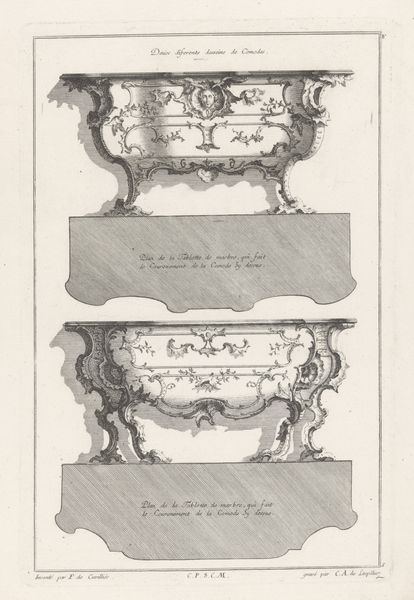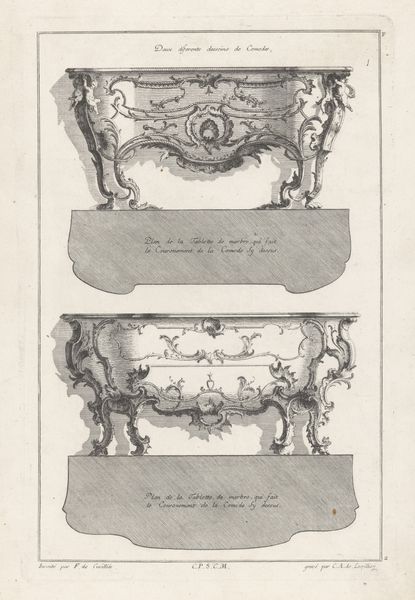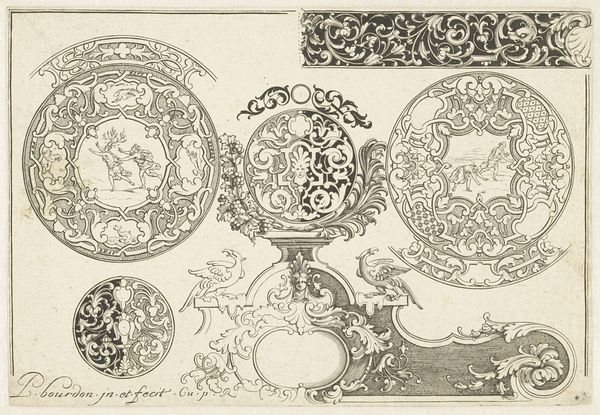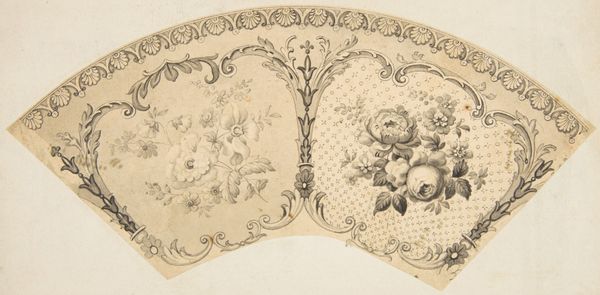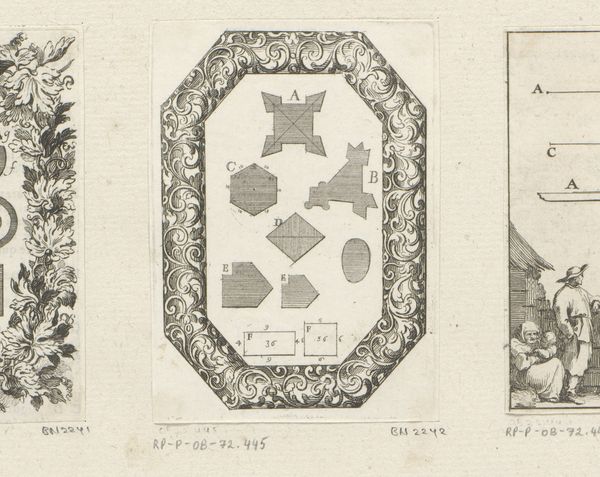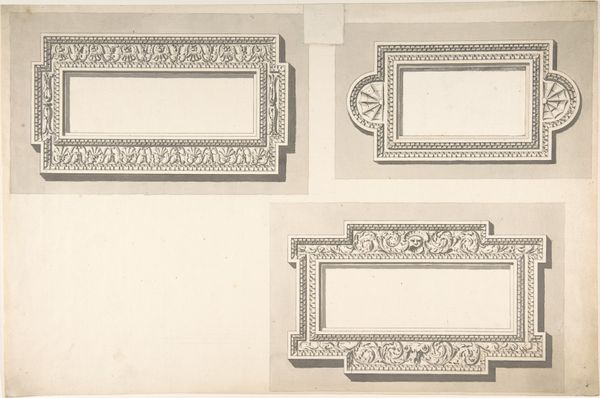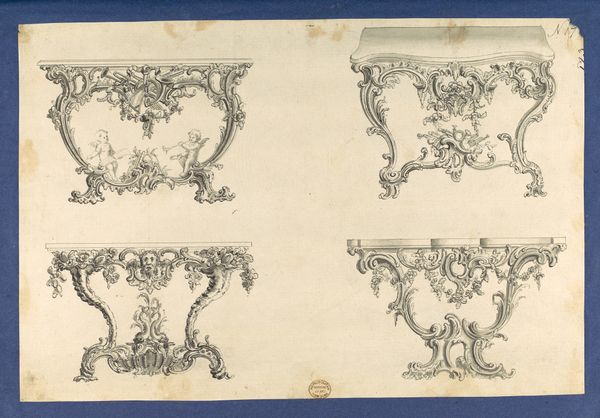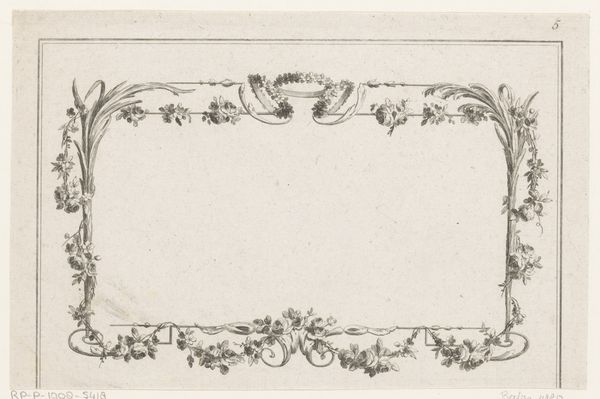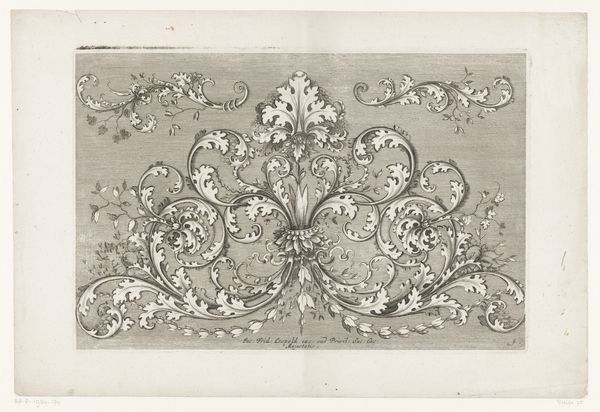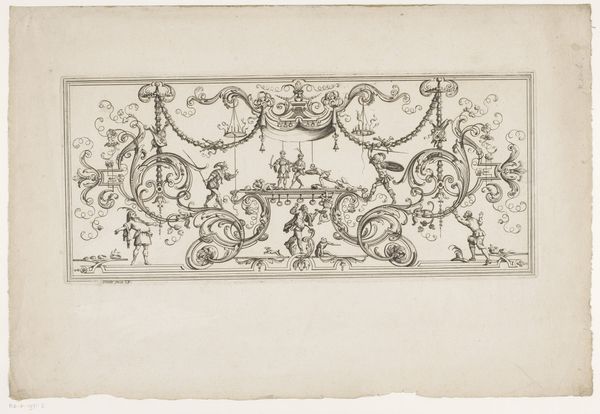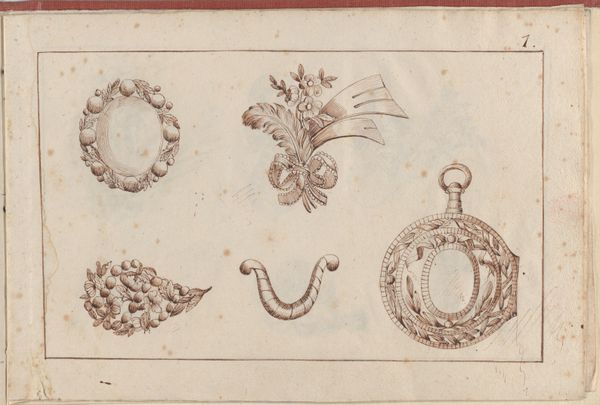
Banknote motifs: six small lathe work designs for corners, frames and numbers 1819 - 1847
0:00
0:00
drawing, graphic-art, ornament, print, engraving
#
drawing
#
graphic-art
#
ornament
#
neoclassicism
# print
#
old engraving style
#
men
#
line
#
decorative-art
#
engraving
Dimensions: plate: 2 7/16 x 4 7/16 in. (6.2 x 11.3 cm) sheet: 3 x 4 3/4 in. (7.6 x 12 cm)
Copyright: Public Domain
Editor: This is an engraving titled "Banknote motifs: six small lathe work designs for corners, frames and numbers" by Cyrus Durand, created sometime between 1819 and 1847. I find the level of detail and craftsmanship quite stunning for something intended for banknotes. What historical context should we consider when looking at this piece? Curator: These delicate, neoclassical designs represent more than just aesthetics; they speak to the very foundations of economic power. Consider the historical period – the burgeoning of industrial capitalism, westward expansion, and, of course, the institution of slavery propping it all up. Editor: How do those issues connect here? These look like innocuous designs. Curator: These intricate designs weren’t simply ornamental. They were critical in preventing counterfeiting at a time when banking regulations were weak, and many different banks issued their own currency. So, who benefited most from secured currency? Those invested in maintaining the status quo, predominantly white, land-owning men. Look closer: the "security" provided by this type of artistry was also a form of control. Think about whose labor was being exploited to build that economic stability, but could not participate in it. Editor: I hadn't thought of it that way. So, this intricate artwork also implies the social structure of that period? Curator: Precisely. Consider that Durand’s skill, a form of artistry and craft, was directly serving the mechanisms of economic disparity. These designs visually reinforce power structures by safeguarding assets within a deeply unjust system. What do you see now that you know a little more about that system? Editor: I now see that they are simultaneously beautiful and loaded with implications about inequality. I guess I learned that we can't isolate art from its societal impact. Curator: Exactly. Recognizing the connections between art, power, and social justice allows us a richer, more honest interpretation of history.
Comments
No comments
Be the first to comment and join the conversation on the ultimate creative platform.

